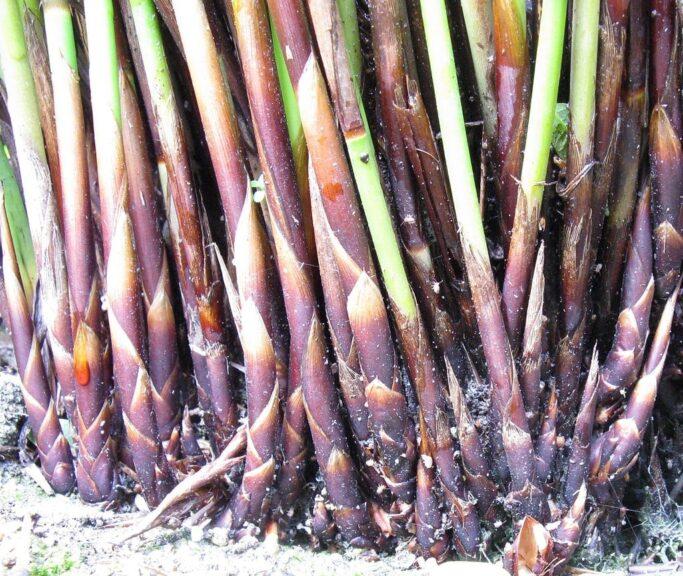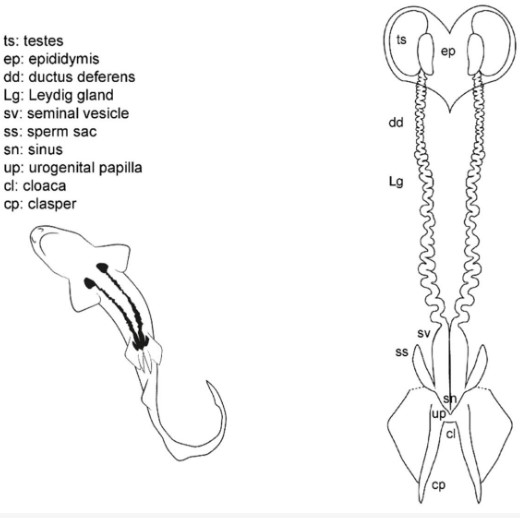
Convoluted
adj., v., [ˌkɑnvəˈlutəd]
Definition: pertaining to overlapping layers by folding or coiling
Table of Contents
The word convoluted is often used to describe different things, especially structures or components, that have overlapped. Questions arise like “can something be convoluted?”, or “how does one give a convoluted explanation?”. When a person hears or thinks of convoluted meaning, they think of something that is twisted or curled up in some sort of way. This is a very general definition of the word. However, how does one define convoluted in a biological sense? And what does convoluted mean when referring to biology?
Convoluted Definition
In botany, the parts of the plant that are convoluted are usually twisted or rolled up. This could be petals that are wound up on flowers or leaves that are twisted individually or even together. It frequently refers to a specific category of imbricate structures, characterized by spirally wrapped overlapping edges of leaves, scales, or other similar features, with each scale having an edge within the preceding scale and an edge outside the following scale.
In this regard, the leaf sheaths of the Restionaceae family are frequently convoluted. On the other hand, a convolute (or “convolutive”) element is spirally wrapped around itself or its branch in formations like a spathe, where there is just one element. This frequently occurs in the buds of leaves and inflorescences of Araceae family members.
In a general sense, convoluted is used as an adjective to describe something as extremely complicated or complex, especially an argument, a story, or a sentence, which as a result, has become difficult to follow. Examples of general usages are “convoluted legal language”, “convoluted journey”, “convoluted reasoning”… Other related words include convolute (verb) and convolution (noun).
Watch this vid about the term ‘convoluted’ in a general sense and in biology:
Biology Definition:
The term convoluted involves the contortion of an organ or part of an organism. It may pertain to a leaf bud in which the leaves are rolled together longitudinally or a flower bud whose petals are twisted together. So, in botany (plant biology), convoluted may relate to tangled plant components that are typically twisted or wrapped up. This may take the form of twisted leaves or individual or groupings of twisted flower petals. In higher animals, including humans, the term “convoluted” generally refers to a particular wound-up and twisted area of the kidney.
Etymology: Latin convolūtum, of convolvere, “to roll together”
Convoluted synonyms: twisted; wound; curled; wrapped; coiled; rolled; spiraled
Within animals, this usually refers to specifically a part of the kidney that is wound up and twisted with numerous overlapping coils.
What does very convoluted mean? When an organ or part of an organism is considered very convoluted, it usually is excessively contorted and cannot typically be “unraveled” easily. Usually, this very convoluted plot operates as part of its function to the organism. This is usually to protect it or to aid in a specific activity.
Nice to know!
Convoluted parts of organisms are usually very hard to straighten or “detangle”. This is because the twists or coils are usually made very tightly.
Convoluted Examples
There are numerous examples of convoluted organs or parts of organisms within both plants and animals. In animals, some shells may have convoluted patterns, but the most common convoluted feature is the nephron in the kidney. On the other hand, in botany, we see convoluted stems, leaves, and even petals on plants. Some of these may have features different from the others. The convoluted leaves of canopy leaves are explained below.
Human Nephron
The human kidney is known for having a convoluted part of the kidney. This is known as the nephron, which contains two sections called the distal and the proximal convoluted tubules (DCT and PCT respectively). PCT and DCT both take place in the renal cortex. Both PCT and DCT have the ability to absorb and secrete being intricately involved.

The primary distinction between PCT and DCT is that although DCT is primarily engaged in secretion, PCT is mostly involved in reabsorption. While urea, uric acid, creatinine, sodium, potassium, and hydrogen ions are released into the filtrate in the DCT, only 66% of water, glucose, amino acids, and electrolytes including sodium, chloride, potassium, and calcium are reabsorbed in the PCT.
Both the PCT and the DCT’s convoluted shape help assist greatly in these processes. This is because these functions take a long while to occur and so the mixture needs a long time to pass through the nephron in order for all the necessary elements and materials to be reabsorbed. Additionally, the convoluted shape makes this long part fit easily within the small kidneys.
Here is a short video on the function of the PCT:
Canopy Tree Leaves
The establishment in the canopy zones appears to benefit from convolute leaves. They could enable photosynthesis over longer intervals. It’s interesting to see that populations with this feature are wiped out at the base of the tree but appear sporadically throughout the trunk.
They may reduce net carbon acquisition in the relatively deep shadow of the first meters of the understory, first by darkening the leaf surface and second by delaying desiccation, which can be harmful in high temperatures and low light.
Convoluted leaves are those that are seen in the understory at levels that are noticeably lower than anticipated. Close to the forest floor, in the understory, plants should either maximize light collection to maintain net carbon uptake or be able to dry quickly, halting respiration losses.
This indicates that the majority of the members of the species that carry it are prevented from developing in the understory by this characteristic. It prevents the organism from gaining competition for resources from other plants.
Tutorial: Rainforest Stratification

Ductus Epididymis
Between the head and the ampulla, the combined ductus epididymis of an adult white shark is more than 1 m in length and is around 35 mm broad. The terminal ampulla measures 350–400 mm in length, the head measures around 250 mm, and the main body of the ductus epididymis measure roughly 600–700 mm. The duct’s diameter ranges from 1 millimeter at its head to roughly 25 millimeters when it connects to the ampulla.
The paired strap-like epididymides are made up of the convoluted tubules of the ductus and its accessory glands. On either side of the dorsal aorta on the dorsal abdominal wall, the epididymides are located forward and above the testes.
A brief isthmus divides the main body from the head, which is a discrete dense node. A single, tightly coiling tubule, the epididymis coils caudally down the hollow of each ventral vertebral arch, progressively increasing in diameter.

Answer the quiz below to check what you have learned so far about convoluted.
References
- Convolute (botany). (2017). In Wikipedia. https://en.wikipedia.org/w/index.php?title=Convolute_(botany)&oldid=783558186
- Convoluted definition and meaning | Collins English Dictionary. (n.d.). Retrieved June 29, 2022, from https://www.collinsdictionary.com/dictionary/english/convoluted
- Convoluted Tubule—An overview | ScienceDirect Topics. (n.d.). Retrieved June 29, 2022, from https://www.sciencedirect.com/topics/agricultural-and-biological-sciences/convoluted-tubule
- diferr. (n.d.). Difference between PCT and DCT. Retrieved June 29, 2022, from https://diferr.com/difference-between-pct-and-dct/
- Lakna. (2017, November 24). Difference Between PCT and DCT | Definition, Reabsorption, Secretion, Similarities. Pediaa.Com. https://pediaa.com/difference-between-pct-and-dct/
- Oliveira, S. M. de. (2018). The double role of pigmentation and convolute leaves in community assemblage of Amazonian epiphytic Lejeuneaceae. PeerJ, 6, e5921. https://doi.org/10.7717/peerj.5921
- Subramanya, A. R., & Ellison, D. H. (2014). Distal Convoluted Tubule. Clinical Journal of the American Society of Nephrology : CJASN, 9(12), 2147–2163. https://doi.org/10.2215/CJN.05920613
©BiologyOnline.com. Content provided and moderated by Biology Online Editors.



